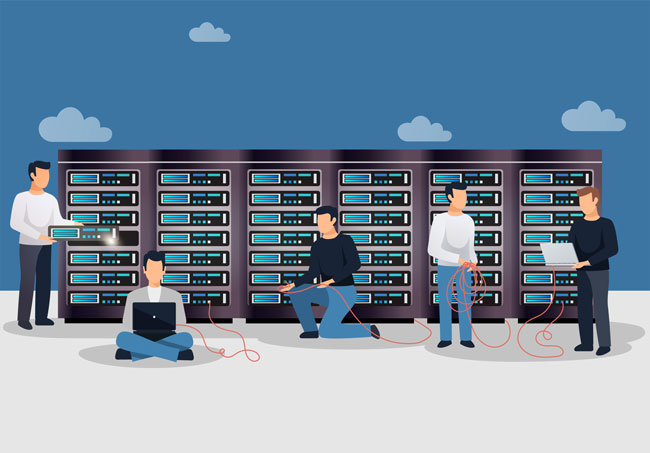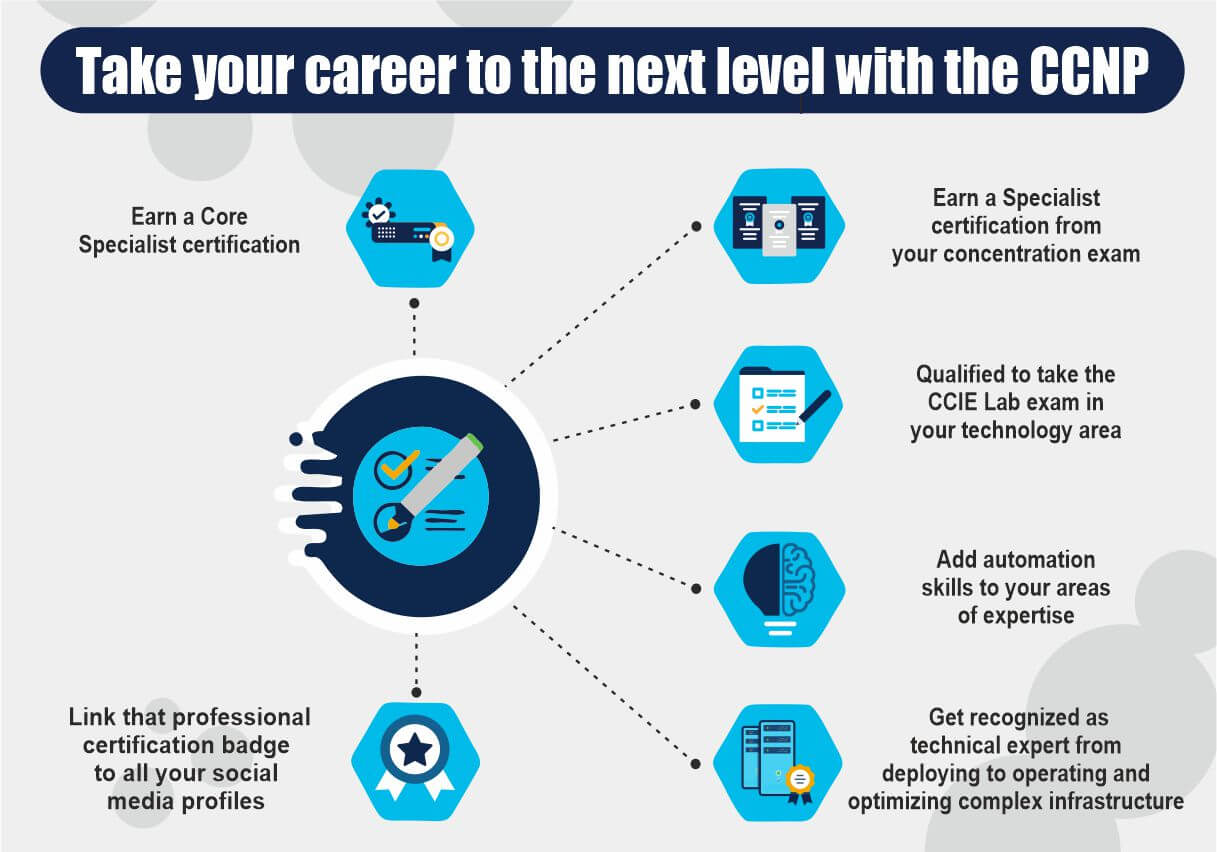
MCSA 2016 Certification Course - Training Institute in Mumbai, India
Course Highlights
 Training Mode
Training Mode
Online & Onsite Learning Method
Learning Method
Lecture & Self-Study Duration
Duration
1 Months Training Hours
Training Hours
3 Hours per day Hands on Labs
Hands on Labs
Yes Study Material
Study Material
Yes Certificate
Certificate
Yes Batches
Batches
Weekdays (Mon-Fri) & Weekend (Sat-Sun) Price
Price
Enquire now


MCSA 2016 Certification - Course Overview
Octa Networks is the renowned institute for MCSA Windows Server 2016 certification course training in Mumbai, India. MCSA Windows Server 2016 online training is available along with onsite training. Octa Networks ranked #1 Institute and Learning Center for Microsoft Certified Solutions Associate 2016.
24x7 access to the lab facility is the core ingredient of the Octa Networks’ MCSA Windows Server 2016 course in Mumbai. MCSA is the associate level certification from Microsoft for the students and professionals who are looking for empowering their credentials with a global certificate which will open the doors of infinite possibilities in their careers in the vast field of Microsoft technologies.
This certification enables system engineers well versed in the latest Windows server 2016 skills to reduce IT costs and deliver more business value.
MCSA Windows Server 2016 Certification Training at Octa Networks: KEY FEATURES:
- Guaranteed training on real-time Devices.
- Explanation of MCSA Windows Server 2016 Concepts (theoretically & practically)
- 24*7 Access to MCSA Windows Server 2016Labs for students
- 60+ hours of training in the classroom with interactive whiteboard and projector.
- Candidates can attend classes up to 2 times till they get their doubts cleared.
- Smart classrooms fully equipped with projectors, Wi-Fi connectivity, and Digital Pads.
- Convenient availability of batches in the early morning to late night.
- 24×7 access to Trainers / Mentors.
MCSA 2016 Certification - Course Details
Course Duration
- 1 month of Instructor-led classroom training
- 1 month of instructor-led online training
What do you learn?
The Microsoft Certified Solutions Associate (MCSA) is a certification designed by Microsoft to test and validate the product knowledge and technical skills of entry-level IT professionals. MCSA certifications are valuable for both employees and employers. Microsoft certifications outline the baseline knowledge and skill IT professionals should know at their experience level. The MCSA validates the knowledge and skills the test taker has acquired in their first year of work experience.
What are the benefits
It Validates and Improves Skills. This will contain any of Microsoft's business platforms such as Bot Framework, Office 365, Cloud Computing, and others. MCSA certification will prove your core skills in building and designing; say cloud-optimized technology solutions through Microsoft technology.
Course Curriculum
- The primary objective of this certification is to validate your expertise in windows server 2012. This certification allows you to work as a network or computer systems administrator or as a computer network specialist. You will have to take three (3) exams.
- Installing and Configuring Windows Server 2012
- Administering Windows Server 2012
- Configuring Advanced Windows Server 2012 Services
- This certification validates your mastery of Windows Server 2008. This certification allows you to work as a network or computer systems administrator or as a computer network specialist. It has the following exams
- Windows Server 2008 Active Directory, Configuring
- Windows Server 2008 Network Infrastructure, Configuring
- Windows Server 2008, Server Administrator
- Validates your skills to configure, manage and maintain a Windows 10 enterprise system. This certification allows you to work as a computer support specialist. You will have to take the following exam
- Configuring Windows Devices
- Validates your skills to configure, manage and maintain a Windows 8 enterprise system. This certification allows you to work as a computer support specialist. You will have to take the following exams;
- Configuring Windows 8.1
- Supporting Windows 8.1
- Validates your skills to develop and maintain mission-critical databases. This certification allows you to work as a database developer or database analyst. You will have to take the following exams;
- Querying Microsoft SQL Server 2012
- Administering Microsoft SQL Server 2012 Databases
- Implementing a Data Warehouse with Microsoft SQL Server 2012
- Validates your skills to transition to and administer cloud-hosted business applications with Microsoft Office 365. This certification allows you to work as a software-as-a-service (SaaS) administrator or cloud applications administrator focused on managing Office 365 products. You will have to take the following exams;
- Part 1: Managing Office 365 Identities and Requirements
- Part 2: Enabling Office 365 Services
- Validates your skills as a Linux system administrator with the ability to design, develop and maintain closed-based solutions that take advantage of Microsoft Azure open source capabilities. You will have to take the following exams.
- Implementing Microsoft Azure Infrastructure Solutions
What to expect in the exam?
- DHCP, DNS, and IPAM implementations
- Remote access solutions like VPN and Direct Access
- DFS and BranchCache solutions
- High-performance network features and functionality
- Implementation of software-defined networking (SDN) solutions
- Installation and configuration of Active Directory Domain Services (AD DS)
- Group Policy implementation for non-Nano Server environments
- Active Directory Certificate Services (AD CS)
- Active Directory Federations Services (AD FS)
- Web Application proxy implementations
What is the passing score?
A passing score is 700 or greater. As this is a scaled score, it may not equal 70% of the points. A passing score is based on the knowledge and skills needed to demonstrate competence as well as the difficulty of the questions.
What jobs are available after the course?
- Desktop Support Engineer
- Technical Support Engineer
- MCSA Trainer
Do you provide placement assistance, post-completion of the training?
We are 100% committed to offering placement assistance to our students. Industry-approved Resume Templates are provided to candidates as guidance to assist them in writing their resumes. We also provide students with FAQ interview questionnaires to help them prepare for their job interviews.
What is the expected salary?
On average, an MCSA Certified person with 3-5 years of experience gets an INR 50,000 to 75,000 monthly salary in India.
What is the next step?
Learning never stops. We always recommend MCSE. There is a huge demand for Microsoft Certified Professionals in the market. This training and certification will establish your authority as an industry expert and provide you with better career opportunities in the market.
Exam
| Exam Name | Exam Code | Duration | Cost | Registration: |
|
MCSA 2016 Certification |
70-740 |
90 minutes | 300 USD | Pearson VUE |
Training Plan & Schedule
Training Plan
| MCSA 2016 Certification | |||
| Batch | Weekdays (Mon-Fri) | Weekend (Sat-Sun) | |
| Mode | Classroom / Online | Classroom / Online | |
 |
Hours | 3 Hours | 4 Hours |
| Duration | 1 Months | 2 Months | |
| Date | Course | Training Type | Batch | Register |
| 6 July 2020 | MCSA 2016 Certification | Classroom / Online | Weekdays (Mon-Fri) | Enquire now |
| 11 July 2020 | MCSA 2016 Certification | Classroom / Online | Weekend (Sat-Sun) | Enquire now |
| 20 July 2020 | MCSA 2016 Certification | Classroom / Online | Weekdays (Mon-Fri) | Enquire now |
| 25 July 2020 | MCSA 2016 Certification | Classroom / Online | Weekend (Sat-Sun) | Enquire now |
Student Reviews

Octa Networks great place for the network training, the information provided is very clear and easy to understand
Aditya Rizky Pratama

It's a good institution for learning. I'm doing my ccie from here, and there teaching explanation is very helpful for understanding the concept in very simple way. Would suggest to my friends and colleagues.
Akhil Singh


Frequently Asked Question
Octa Networksis providing MCSA Windows Server 2016 bootcamps, Online and classroom/instructor led trainings are scheduled. Octa Networks provides MCSA Windows Server 2016 training in Mumbai which is administered by certified trainers.
Microsoft certified Solutions Associate is a entry level certification designed to test and validate the knowledge and technical skills of IT professionals.
MCSA certifications do not expire or require recertification. MCSA holders can see all their certificates listed on their official Microsoft Certified Professional Transcript classified as ‘Active’ and ‘Legacy’. Certifications will remain in ‘Active’ status until Microsoft retires the exam. Microsoft retires the exam when the product or services associated with the exam is declared End Of Life. Such retired exams are listed under ‘Legacy’ certifications, they are not treated as expired.
You have to pass one of the three Certification examinations for getting MCSA certificate.
The prime objective of the MCSA training is to develop skilled professionals who can install and configure Windows server 2016, Administer Windows Server 2016 along with all the functionalities and services. The respect and demand of MCSA Windows Server 2016 certified professionals are matchless around the globe. The average salary ranges from 3,00,000 – 4,00,000 INR.
MCSA certificate examination contains 40-60 questions. The number of questions on an MCSA exam may vary as Microsoft updates it over time to time to keep it aligned with current changes in the technology and job role.






